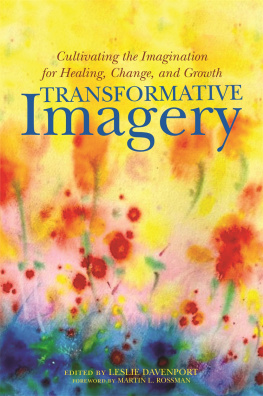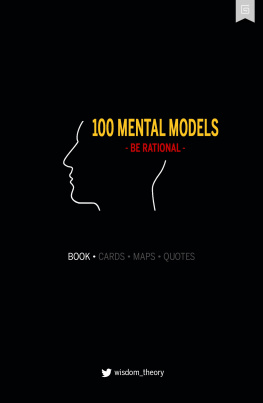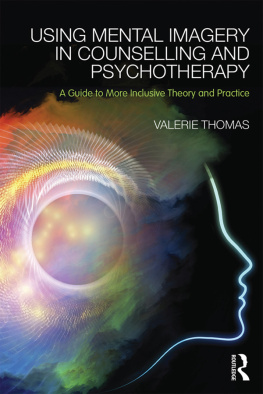Oxford University Press is a department of the University of Oxford. It furthers the Universitys objective of excellence in research, scholarship, and education by publishing worldwide. Oxford is a registered trade mark of Oxford University Press in the UK and in certain other countries
All rights reserved. No part of this publication may be reproduced, stored in a retrieval system, or transmitted, in any form or by any means, without the prior permission in writing of Oxford University Press, or as expressly permitted by law, by licence or under terms agreed with the appropriate reprographics rights organization. Enquiries concerning reproduction outside the scope of the above should be sent to the Rights Department, Oxford University Press, at the address above
You must not circulate this work in any other form and you must impose this same condition on any acquirer
Printed and bound in the UK by Clays Ltd, Elcograf S.p.A.
Links to third party websites are provided by Oxford in good faith and for information only. Oxford disclaims any responsibility for the materials contained in any third party website referenced in this work.
Here is a story the French photographer Henri Cartier-Bresson liked to tell: during the Second World War, he was hiding in a shed in the middle of the nondescript German countryside surrounded by a mountain range. He spent weeks there, fearing for his life. Then one day he visualized the ocean behind the mountain range. And this completely transformed his experience. Not only his experience of the mountain range, but also of his general situation and of himself. Mental imagery does have a huge influence on the way we perceive, and on our mental life in general.
This book is about mental imagery and the important work it does in our mental life. It plays a crucial role in the vast majority of our perceptual episodes. It also helps us understand many of the most puzzling features of perception (like the way it is influenced in a top-down manner and the way different sense modalities interact). But mental imagery also plays a very important role in emotions, action execution, and even in our desires. In sum, there are very few mental phenomena that mental imagery doesnt show up inin some way or other. The hope is that if we understand what mental imagery is, how it works and how it is related to other mental phenomena, we can make real progress on a number of important questions about the mind.
I wrote this book for an interdisciplinary audience. As it aims to combine philosophy, psychology, and neuroscience to understand mental imagery, I have not presupposed any prior knowledge in any of these disciplines. As a result, readers with no background in any of these disciplines can also follow the arguments.
The book has many short chapters, organized into five parts. Part I is about mental imagery, whereas the rest of the book is about the role it plays in perception (Part II), multimodal perception (Part III), cognition (Part IV), and action (Part V). The chapters are (almost) all self-standing, so the reader can jump around freely, but it probably makes sense to read Part I first.
A lot has been written about imagination in the philosophy of mind and beyond. Mental imagery is a much more basic (and also conceptually less problematic) concept than imagination. Nonetheless, much less attention has been devoted to mental imagery. The aim of this book is to fill this gap and put mental imagery at the forefront of our thinking about the mind.
David Hume memorably said that the memory, senses, and understanding are, [], all of them founded on the imagination. My aim is to convince the reader that the memory, senses, and understanding are, all of them founded on mental imagery.
I started working on the topic of mental imagery in the Fall of 2006, when, fresh out of PhD, I gave my first graduate seminar at Syracuse University. And mental imagery has been the primary focus of my research in the last eight years or so. As a result, it is difficult to enumerate all those who helped me to think through these issues and also the venues where I presented the material of the book, but Ill try it anyway.
I gave talks that were directly related to mental imagery at various conferences of the American Philosophical Association (one Eastern, one Pacific, two Central) as well as the University of Manchester, the University of British Columbia, Simon Fraser University, University of Geneva, various conferences of the American Society of Aesthetics, University of Cardiff, University of Sheffield (twice), University of Porto, University of Warwick, various conferences and talks at Ruhr Universitt Bochum, University of Bergen, Berlin School of Mind and Brain (twice), various conferences of the Association of the Scientific Study of Consciousness, University of Leeds, Institut Jean Nicod, Courtauld Institute, University of East Anglia, University of Urbino, University of Milan (twice), University of Exeter, University of Oslo, Barnard College, University of Salzburg (twice), University of Aix/Marseilles, Oxford University (twice), Southern Society of Philosophy and Psychology, University of North Carolina, Chapel Hill, Hebrew University, Jerusalem, Kirschberg Symposium, University of Southampton, University of Nijmegen, University of Toronto, University of Ghent, University of Torino, NYU Abu Dhabi, Bilkent University, various online talks during the COVID-19 pandemic, Washington University, Saint Louis, University of Kent, Humboldt Universitt, Berlin, University of Krakw, University of Bristol, City University of New York, Universita Svizzera Italiana, LMU Munich, University of Lisbon.
Some versions of the arguments I presented in this book were published in the following journals: Philosophical Transactions of the Royal Society B, Cognition, Cortex, Philosophical Studies, Pacific Philosophical Quarterly, Analysis, Journal of the American Society of Aesthetics, Ergo, Synthese, Multisensory Research, Thought, Perception, i-Perception, Consciousness and Cognition, The Monist, Frontiers in Psychology, Mind & Language, Journal of Consciousness Studies, as well as in various edited volumes.
There is no way I can enumerate everyone who gave excellent feedback to some of the material in this book, but I am especially grateful to those who read and commented on either the entire book or almost the entire book: Dustin Stokes, Neil Van Leeuwen, Jake Quilty-Dunn, Robert Briscoe, Dominic Gregory, Amy Kind, Peter Langland-Hassan, Santiago Echeverri, Geraldo Viera, Alma Barner, Adam Bradley, Bras Saad, Laura Silva, Jason Leddington, Nicolas Porot, Peter Fazekas, Carlota Serrahima, Brandon Ashby, Sarah Arnaud, Kris Goffin, Francesco Marchi, Stephen Gadsby, Alex Kerr, Oli Odoffin, Amanda Evans, Anna Ichino, Alex Geddes, Lu Teng, Manolo Martinez, Denis Buehler, Anya Farennikova, Jonathan Cohen, Mohan Matthen, Thomas Raleigh, Kevin Lande, Nick Wiltsher, Chris McCarroll, Dan Williams, Margot Strohminger, Craig French, Maarten Steenhagen, Patrick Butlin, Jacob Berger, Dan Cavedon-Taylor, Chiara Brozzo, Laura Gow, Andrea Blomkvist, Julian Bacharach, Jeremy Pober, Andrea Rivadulla, Grace Helton, as well as an anonymous referee for Oxford University Press.















